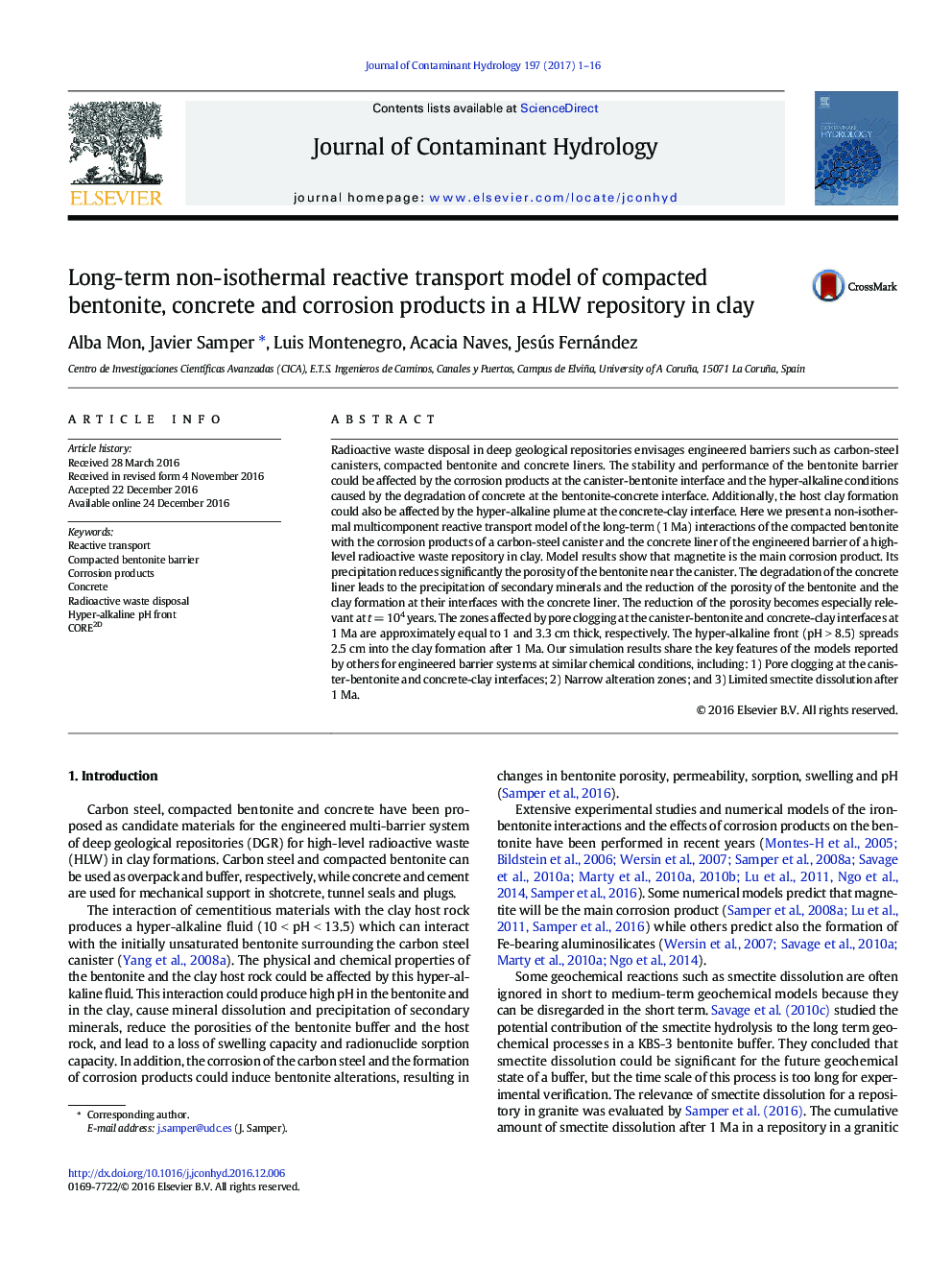| کد مقاله | کد نشریه | سال انتشار | مقاله انگلیسی | نسخه تمام متن |
|---|---|---|---|---|
| 5765903 | 1627014 | 2017 | 16 صفحه PDF | دانلود رایگان |

- Canister corrosion and concrete degradation lead to precipitation of secondary minerals and porosity reduction.
- The reduction of the porosities becomes especially relevant for t > 10,000 years.
- Pore clogging zones at the canister-bentonite and concrete-clay interfaces after 1Â Ma are 1 and 3.3Â cm thick, respectively.
- The hyperalkaline front (pHÂ >Â 8) extends 2.5Â m into the clay formation after 1Â Ma.
- Our simulation results share the features of the models reported by others for similar engineered barrier systems.
Radioactive waste disposal in deep geological repositories envisages engineered barriers such as carbon-steel canisters, compacted bentonite and concrete liners. The stability and performance of the bentonite barrier could be affected by the corrosion products at the canister-bentonite interface and the hyper-alkaline conditions caused by the degradation of concrete at the bentonite-concrete interface. Additionally, the host clay formation could also be affected by the hyper-alkaline plume at the concrete-clay interface. Here we present a non-isothermal multicomponent reactive transport model of the long-term (1 Ma) interactions of the compacted bentonite with the corrosion products of a carbon-steel canister and the concrete liner of the engineered barrier of a high-level radioactive waste repository in clay. Model results show that magnetite is the main corrosion product. Its precipitation reduces significantly the porosity of the bentonite near the canister. The degradation of the concrete liner leads to the precipitation of secondary minerals and the reduction of the porosity of the bentonite and the clay formation at their interfaces with the concrete liner. The reduction of the porosity becomes especially relevant at t = 104 years. The zones affected by pore clogging at the canister-bentonite and concrete-clay interfaces at 1 Ma are approximately equal to 1 and 3.3 cm thick, respectively. The hyper-alkaline front (pH > 8.5) spreads 2.5 cm into the clay formation after 1 Ma. Our simulation results share the key features of the models reported by others for engineered barrier systems at similar chemical conditions, including: 1) Pore clogging at the canister-bentonite and concrete-clay interfaces; 2) Narrow alteration zones; and 3) Limited smectite dissolution after 1 Ma.
Journal: Journal of Contaminant Hydrology - Volume 197, February 2017, Pages 1-16